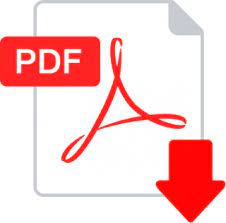Implementasi Tingkat Tutur Dalam Konsep Uchi Soto
DOI:
https://doi.org/10.34010/js.v13i1.7818Abstract
ABSTRACT
In the Japanese bussness recognizes uchi soto concept which affects the use of speech levels used by speakers to speech partners This research is aims to analyze and describe how the implementation of speech level according to the ” Uchi soto” concept in the japanese bussness is described in the drama Love Phantom. The data in this research are primary data in the form of dialogue obtained using the observation method using the note-taking technique on the video drama Phantom which is watched online on the website filmarks.com. Analysis of the data using the technical method of determining pillar elements to select the speech data to be studied, namely the level of Japanese speech as a form of qualitative research that describes the speech between characters that appear in the drama Love Phantom, which is allegedly the level of Japanese speech when speaking to uchi and soto side of person. From the results obtained from this research, it shows that in the implementation of the speech level in the “uchi soto”concept, the level of speech used by uchi is futsuugo and teineigo only, this is based on the intimacy between fellow employees which is realized by useing futsuugo, and the use of teineigo to superiors as a form of respect. While the type of speech level used for the Soto party is the Keigo form which is used to show respect to the speech partner who is the Soto side of person. and also found the use of the Futsuugo pattern to the soto Side of person based on a close friendship relationship between the speaker and the speech partner during job.
Keyword : Speech level, Uchi soto, Drama, Futsuugo, Keigo
ABSTRAK
Di dalam ranah bisnis Jepang mengenal konsep uchi soto yang mempengaruhi penggunaan tingkat tutur penutur kepada mitra tutur. Penelitian ini bertujuan untuk menganalisis dan mendeskripsikan bagaimana implemntasi tingkat tutur menurut konsep uchi soto dalam ranah bisnis jepang yang digambarkan dalam drama Love Phantom. Data penelitian ini adalah data primer berupa dialog yang didapat dengan metode observasi menggunakan teknik simak catat pada video drama Live Phantom yang secara daring di web filmarks.com. Penganalisisan data menggunakan metode teknik unsur pilar penentu untuk memilih data tuturan yang diteliti, yaitu tingkat tutur bahasa Jepang sebagai wujud penelitian yang kualitatif yang mendeskripsikan tuturan antar tokoh dalam drama Love Phantom saat berbicara kepada pihak uchi maupun soto. Dari hasil yang diperoleh penelitian ini, menunjukan bahwa dalam implementasi tingkat tutur dalam konsep uchi soto, tingkat tutur yang digunakan kepada pihak uchi yaitu futsuugo dan teineigo saja, hal ini didasar oleh adanya keakraban diantara sesama pegawai yang diwujudkan dengan penggunaan futsuugo, serta penggunaan teineigo kepada atasan sebagai wujud rasa hormat. Sementara jenis tingkat tutur yang digunakan kepada pihak soto adalah bentuk Keigo yang dipergunakan untuk menunjukan penghormatan kepada mitra tutur yang merupakan pihak soto, serta ditemukan pula adnaya penggunaan pola Futsuugo kepada pihak soto yang didasari adanya hubungan pertemannan yang akrab diantara sang penutur dan mitra tutur.
Keyword : Tingkat tutur, Uchi soto, Drama, Futsuugo, Keigo
Downloads
Published
Issue
Section
License
- Authors retain copyright and grant the journal right of first publication with the work simultaneously licensed under a Creative Commons Attribution License that allows others to share the work with an acknowledgement of the work's authorship and initial publication in this journal.
- Authors are able to enter into separate, additional contractual arrangements for the non-exclusive distribution of the journal's published version of the work (e.g., post it to an institutional repository or publish it in a book), with an acknowledgement of its initial publication in this journal.
- Authors are permitted and encouraged to post their work online (e.g., in institutional repositories or on their website) prior to and during the submission process, as it can lead to productive exchanges, as well as earlier and greater citation of published work (See The Effect of Open Access)










.jpg)

